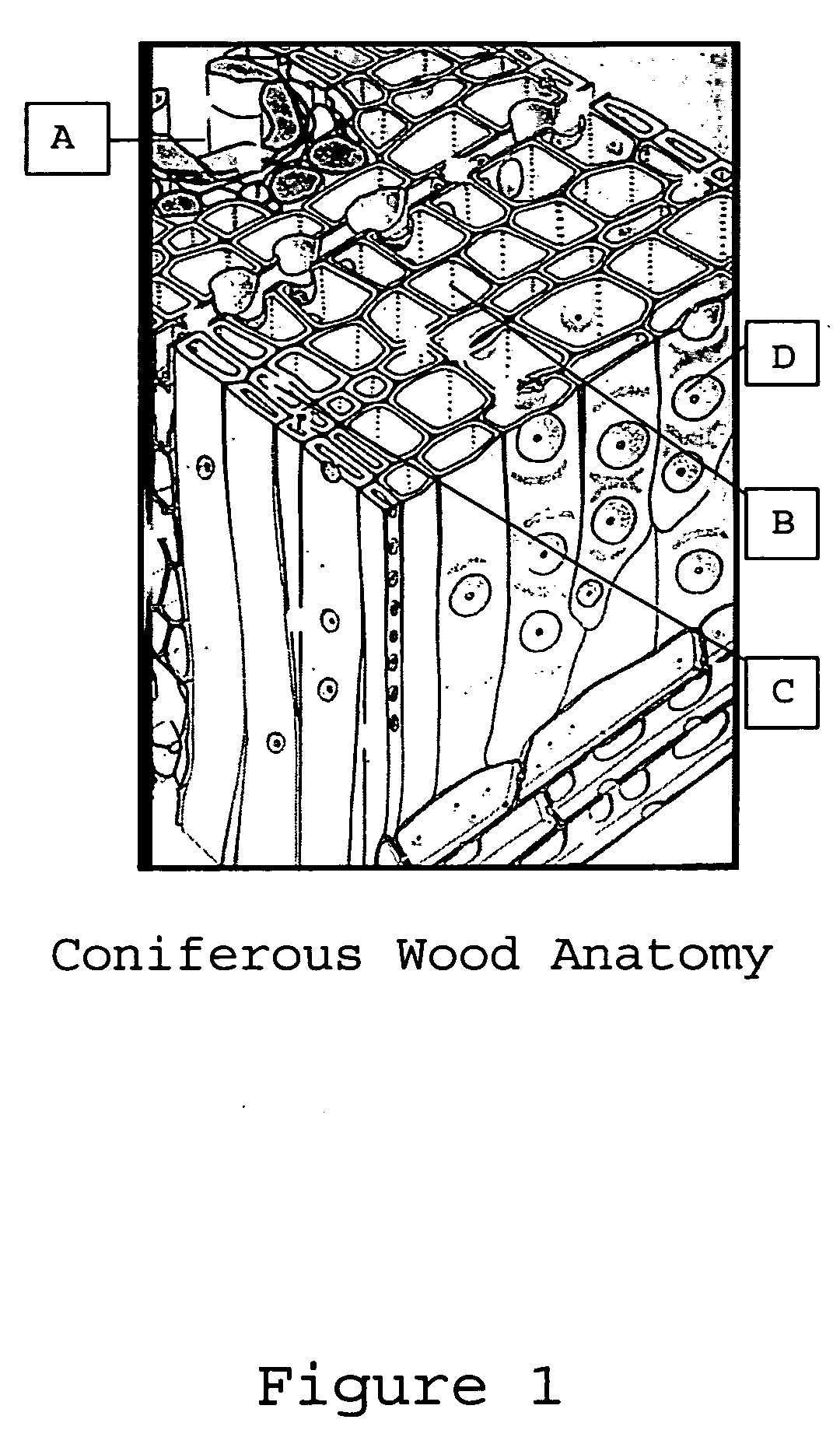Compositions and methods for treating cellulose-based materials with micronized additives
a technology of additives and cellulose, applied in the field of compositions and methods for treating cellulose-based materials with micronized additives, can solve the problems of environmental damage, leaching additives, residue bleeding, etc., and achieve the effects of reducing cost, reducing cost, and reducing cos
- Summary
- Abstract
- Description
- Claims
- Application Information
AI Technical Summary
Benefits of technology
Problems solved by technology
Method used
Image
Examples
example 1
[0042] Six hundred grams of red iron oxide, 400 g yellow iron oxide and 10 g carbon black are added to a container containing 2850.0 g of water and 150 g of a commercially available dispersant. The mixture is mechanically stirred for about 20 minutes and then added to a grinding mill. The sample is ground for about 1 hour and a stable dispersion is obtained. The particle size of the dispersed product can be analyzed by Horiba LA-910 Particle Size Distribution Analyzer (PSDA). The average particle size is preferably 0.3 microns with a distribution range of 0.04 um to 1.5 um.
[0043] The resulting brown iron oxide dispersion can be diluted with water to make a treating fluid containing 1.0% iron oxide. The treating fluid can be used to treat southern pine samples using a full cell process. The treated samples can be oven dried and tested to check uniform distribution of iron oxide throughout the cross sections and for the presence of a uniform brown color.
example 2
[0044] Nine hundred grams of red iron oxide and 100 g yellow iron oxide are added to a container containing 1550 g of water and 150 g of a commercially available dispersant. The mixture is mechanically stirred for about 20 minutes and then added to a grinding mill. The sample is ground for about 1 hour and a stable dispersion is obtained. The particle size of the dispersed product can be analyzed by Horiba LA-910 Particle Size Distribution Analyzer (PSDA). The average particle size is preferably 0.3 microns with a distribution range of 0.005 um to 1.5 um.
[0045] The resulting dispersion can be diluted with water to make a treating fluid containing 0.5% total iron oxides. The treating fluid can be used to treat southern pine samples using a full cell process. The treated samples can be oven dried and tested to check uniform distribution of iron oxide throughout the cross sections and for the presence of a uniform color.
example 3
[0046] Seven hundred grams of red iron oxide, 200 g yellow iron oxide and 5 g black iron oxide are added to a container containing 2050 g of water and 180 g of a commercially available dispersant. The mixture is mechanically stirred for about 20 minutes and then added to a grinding mill. The sample is ground for about 1 hour and a stable dispersion is obtained. The particle size of the dispersed product can be analyzed by Horiba LA-910 Particle Size Distribution Analyzer (PSDA). The average particle size is preferably 0.35 microns with a distribution range of 0.005 um to 2.0 um.
[0047] The resulting dispersion can be diluted with water to make a treating fluid containing 0.5% total iron oxides. The treating fluid can be used to treat southern pine samples using a full cell process. The treated samples can be oven dried and tested to check uniform distribution of iron oxide throughout the cross sections and for the presence of a uniform color.
PUM
| Property | Measurement | Unit |
|---|---|---|
| Percent by mass | aaaaa | aaaaa |
| Percent by mass | aaaaa | aaaaa |
| Percent by mass | aaaaa | aaaaa |
Abstract
Description
Claims
Application Information
 Login to View More
Login to View More - R&D
- Intellectual Property
- Life Sciences
- Materials
- Tech Scout
- Unparalleled Data Quality
- Higher Quality Content
- 60% Fewer Hallucinations
Browse by: Latest US Patents, China's latest patents, Technical Efficacy Thesaurus, Application Domain, Technology Topic, Popular Technical Reports.
© 2025 PatSnap. All rights reserved.Legal|Privacy policy|Modern Slavery Act Transparency Statement|Sitemap|About US| Contact US: help@patsnap.com


